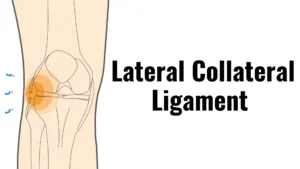Introduction
LCL (lateral collateral ligament) tears are injuries that often occur in the knee. The LCL is a strong band of tissue on the outer side of the knee that helps to stabilize the joint. Sudden impact or force, such as during a sports activity or accident, can cause the ligament to tear. Understanding the causes, symptoms, and treatment options for LCL tears is essential for proper diagnosis and management of this common knee injury.

Overview
LCL tears are injuries that affect the knee joint, specifically the ligament on the outer side. The LCL plays a crucial role in maintaining stability, preventing excessive side-to-side movement, and providing support to the knee. When this ligament tears, it can lead to pain, swelling, and limited mobility in the knee. LCL tears can range from mild to severe, with the severity depending on the extent of the tear.
Symptoms and Causes
Symptoms:
– Pain and tenderness on the outer side of the knee. – Swelling and bruising. – Difficulty bearing weight on the affected leg. – Limited range of motion. – Instability or feeling of the knee giving way.
Causes:
– Direct impact to the outer side of the knee, such as during a tackle in contact sports. – Sudden twisting or hyperextension of the knee joint. – Repetitive stress or overuse from activities that involve lateral movements, such as skiing or basketball. – Previous injuries or weak knee joint structures that make the LCL more susceptible to tearing.
Diagnosis and Tests
To diagnose an LCL tear, a healthcare professional will typically perform a physical examination and evaluate the patient’s medical history. They may also order imaging tests such as X-rays or MRI scans to assess the extent of the injury and rule out other potential knee problems. Physical examination may involve applying pressure or stress to the knee to assess stability and range of motion.
Management and Treatment
Non-Surgical Treatment:
– Resting and avoiding activities that worsen symptoms. – Applying ice to reduce swelling. – Using compression bandages or braces to provide support. – Taking over-the-counter pain medications to relieve pain and inflammation. – Physical therapy exercises to restore strength and flexibility.
Surgical Treatment:
In cases of severe LCL tears or if the ligament fails to heal with conservative methods, surgery may be recommended. Surgical treatment options include LCL reconstruction, which involves using a graft to repair the torn ligament. Rehabilitation and physical therapy are essential after surgery to regain strength and restore proper knee function.
Prevention
While it may not be possible to prevent all LCL tears, there are steps individuals can take to reduce the risk: - Strengthening the muscles around the knee to provide better support. – Wearing appropriate protective gear during high-impact sports. – Avoiding sudden and excessive twisting motions. – Gradually increasing intensity and duration of physical activities to allow the body to adapt.
Outlook / Prognosis
The outlook for LCL tears depends on the severity of the injury and the individual’s adherence to treatment and rehabilitation. Mild to moderate tears often respond well to conservative treatment and can heal within a few weeks to a few months. Severe tears may require surgery and a longer recovery period. With proper treatment and rehabilitation, most individuals can regain full function and return to their regular activities.
Frequently Asked Questions
1. Can LCL tears heal without surgery?
– Yes, mild to moderate LCL tears can often heal with non-surgical treatments such as rest, ice, compression, and physical therapy.
2. How long does it take to recover from LCL tear surgery?
– Recovery time after LCL tear surgery can vary but usually takes several months. Physical therapy is an important component of the recovery process.
3. Can LCL tears lead to long-term complications?
– Without proper treatment and rehabilitation, LCL tears can lead to long-term complications such as chronic knee instability and increased risk of future injuries. However, with appropriate care, most individuals can achieve a full recovery.